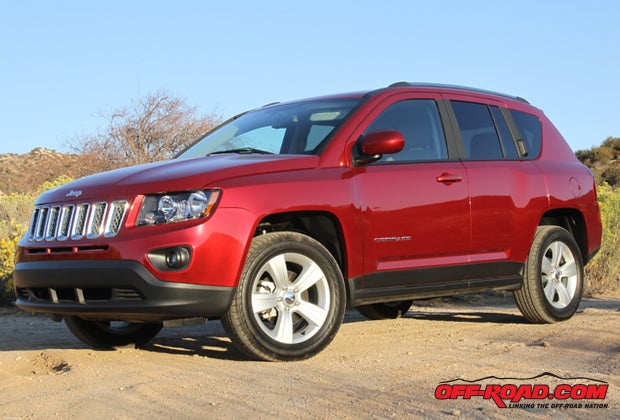
Back when the Jeep Compass was introduced in 2007 this small SUV was heavily criticized by brand loyalists for wearing a Jeep badge but not living up to the capability for which Jeep is known. But a major redesign in 2011 put the compact SUV on the right path of blending practically and capability, and with a few more changes made in 2014 we were curious if this updated Compass could actually handle a little fun in the dirt.
With the launch of the all-new mid-sized Cherokee from Jeep, it’s easy for buyers to overlook the slightly smaller Compass. With no more Liberty, the Compass now occupies the lone compact SUV slot in the Jeep lineup. Something that should not overlooked is the fact that the Compass comes in at a notably lower starting point than the Cherokee at $18,795 vs. $22,995. So while this buyer is looking to get the benefits of a crossover in the form of decent fuel economy and having the added space of an SUV, the seven-slot grille at the front of the Compass screams Jeep capability as well, so the Compass looks to provide all of that in an affordable, practical package.

Powered the Compass is a 2.4-liter inline four-cylinder motor that produces 172 hp and 165 lb-ft of torque, and if properly equipped it is capable of towing up to 2,000 pounds. Jeep notes that the 2.4L motor has dual variable-valve timing (VVT) on both the intake and exhaust camshafts (not typically found in this segment) designed to improve torque, speed fuel economy and provide smoother engine performance compared to vehicles without the system.
For 2014, the Compass is fitted with a new six-speed PowerTech-developed 6F24 fully automatic transmission, which takes the place of the previous continuously variable automatic transmission (CVT) that left much to be desired. The new 6F24 features a 0.77 sixth gear to reduce engine rpm at highway speeds to improve fuel economy and provide up to 30 mpg on the highway, with the 4x4 version coming in slightly lower at 27 mpg on the highway.
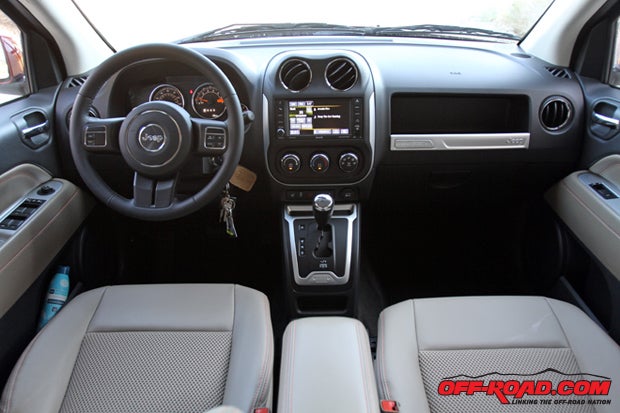
The Compass comes in three different trim levels that include the Sport, Latitude and Limited, all featuring the same 2.4L motor but the Sport gets a five-speed manual trans. Latitude and Limited versions will provide drivers the option to use the Auto Stick for a “manual-like” shift feel for more sporty driving. The Sport and Latitude are fitted with 17 x 6.5-inch aluminum wheels, while the Limited gets 18 x 7-inch wheels. The Compass relies on independent front and rear multilink suspension, and ground clearance for the Compass is just a smidge above 8 inches.
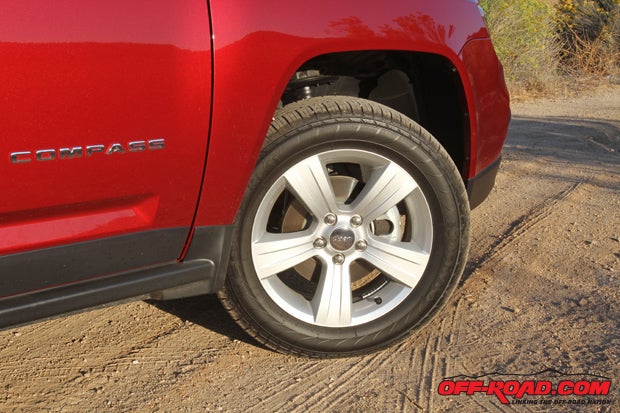
Inside our Compass Latitude are newly designed sport mesh and vinyl low-back buckets seats, and driver and passenger get the benefit of heated front seats on this trim level as well. A step up to the Limited model will provide leather-trimmed front and rear seats and a six-way power adjustable drivers seat, among other features.
If added space is needed for hauling larger items, the front passenger seat thoughtfully folds flat as well.
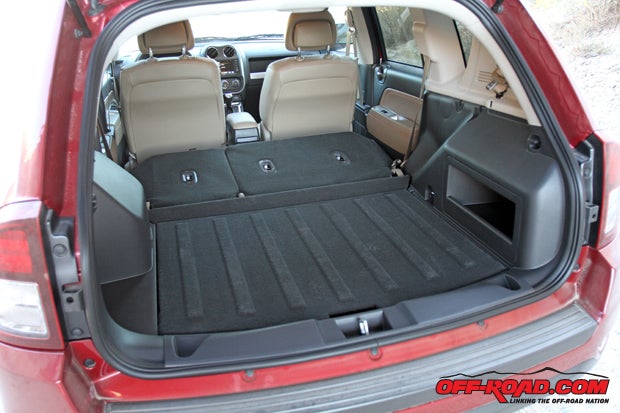
When it comes to safety, the Compass features six airbags that include new front seat-mounted side airbags. Electronic Stability Control helps detect under- and over-steer to apply individual braking and throttle control should it be needed. The Compass is also outfitted with an Antilock 4-Wheel Disc Brake System (ABS) for improved vehicle control and stopping power. Not that the vehicle is all that large, but the rear backup camera is a nice feature to have, and the ParkView system makes gauging other objects or parking spots much easier with the use of grid lines displayed on the screen. Hill Start Assist will help prevent the vehicle from when starting on a steep incline or downhill section.

Our Compass Latitude test vehicle was neither bare bones nor top of the line, such as the High Altitude or Limited model, but it still is nicely equipped inside the cabin. Aside from the aforementioned heated seats, our vehicle features a 6.5-inch touchscreen display featuring Chrysler’s Uconnect system, which includes voice command options and Bluetooth connectivity. A 40 GB hard drive is featured for uploading content, while an auxiliary connection allows for songs from a phone or iPod to be played. We also appreciate the 12-volt outlet for plugging in items in need a charge.
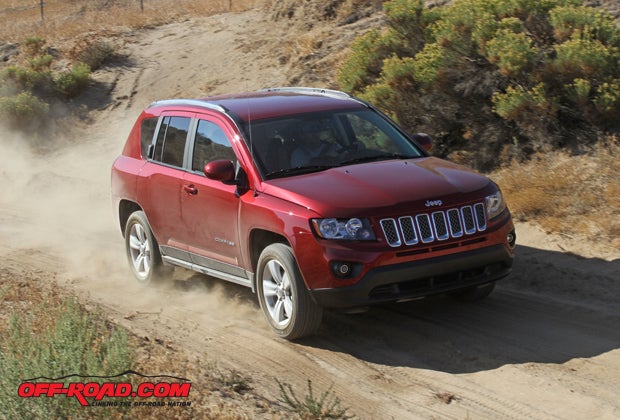
Finding True North
Our goal in testing the Compass is not to see how hard-core it can be off the pavement (we essentially already know that), but more so whether Jeep could probably blend compact SUV practicality with a small level of Jeep capability. We logged in plenty of road miles in the Compass and were overall happy with its performance on the pavement. The 2.4L motor feels zippy on the bottom end, and it certainly has enough power to confidently pass cars on the highway. Sure, you’re not going to blow away the next car in a drag race leaving a stoplight, but then again you wouldn’t be getting that fuel economy that buyers of this vehicle want if you could.
The Compass can be a little loud on rough highway sections at times, as road noise is clearly noticeable at times. We do like the smooth shifting of the six-speed trans, especially in comparison to the previous CVT. When it came to fuel economy, our 4x4 with the Freedom Drive I off-road setup sits at a 21/27 EPA fuel rating, and our combined fuel numbers were right in line of the 23 combined rating at 23.2 mpg.
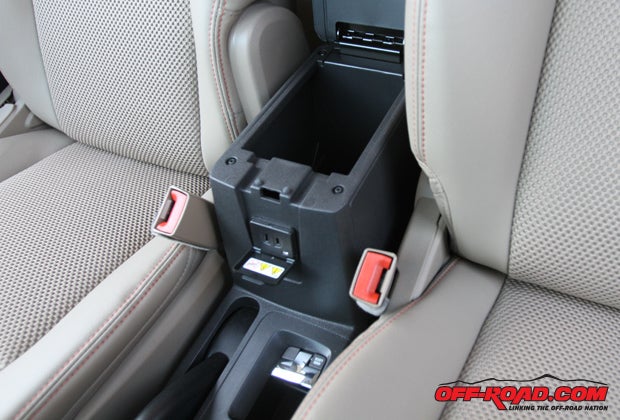
When it comes to getting off the pavement, there are two 4x4 systems for the Compass: Freedom Drive I and II. Our system featured the less-intensive Freedom Drive I, which is essentially full-time four-wheel-drive system with the ability to “lock” the center coupling, which is operated by pulling up a small finger-operated lever on the center console – not something we loved. The Freedom Drive II is an optional upgrade for more capability in the dirt, offering a 4-Wheel Drive Off-Road Mode, a fuel tank skid plate shield, unique bright exhaust tip, all-terrain tires and all-season floor mats. Although we didn’t test the “full” off-road package, we were surprisingly impressed with the Freedom Drive 1 setup on our Compass Latitude. Taking it on our off-road test loop made us a little nervous at first, as we contemplated our best options for recovery should we get stuck in a soft sand bank or something of the sort. Taken within context that the Compass isn’t make for serious wheelin’, it felt just fine off of the pavement. There’s plenty of power and traction to climb steep dirt hills, its lighter-than-most weight for an SUV means it doesn’t bog down in the soft stuff, and it didn’t punish you in cross-ruts and weathered grooves. Certainly you won’t be taking this on Pritchett Canyon in Moab, but for campers, mountain bikers or hikers looking to get to the trailhead or campsite, the Compass proved to us it still has Jeep blood running through its veins.
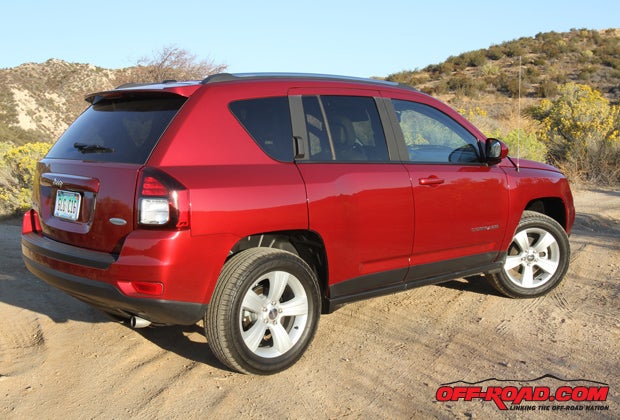
On the Right Path
With the starting price sitting at just under 19K at $18,795, the Compass offers an affordable option for those looking for a fuel-efficient crossover that can still do SUV tasks. Our test vehicle is probably a more realistic price gauge, however, as the Latitude 4x4 test model starts at $24,495, but as tested ours comes in at $26,880 (which includes destination charge). Keep in mind, off-roaders looking for more performance will undoubtedly look at the Freedom Drive II upgrade, but the off-road performance and CVT2L transmission will come at the expense of fuel economy (20 city/23highway).
The Compass is designed to compete in the compact crossover SUV segment, and we have to say it is a much better vehicle than when first introduced in 2007. The tweaks in recent years to the exterior, interior and drivetrain make it a much nicer vehicle to drive. Although the Compass comes in at a reasonable price, we can’t say the fuel economy is spectacular, and the road noise still makes it feel slightly cheap at times, butt it handles well, offers decent storage space and provides a good all-around package for a compact SUV. Most importantly, the Compass still provides a level of Jeep capability, albeit on a much milder scale than a Wrangler. Although we likely wouldn’t have said this a few years ago, for those who want to avoid making that leap into a midsize SUV due to price, the Jeep Compass is a worthwhile option to consider in the compact segment.
Key Specs – 2014 Jeep Compass Latitude 4x4
Engine: 2.4-liter four-cylinder inline
Horsepower: 172 @ 6,000 rpm
Torque: 165 lb-ft @ 4,400 rpm
Transmission: 6-speed automatic
Length: 175.1 in.
Height: 65 in.
Width: 71.4 in.
Track Width: 59.8 in.
Wheelbase: 103.7 in.
Approach Angle: 19.5 degrees
Departure Angle: 28.5 degrees
Breakover Angle: 20.6 degrees
Ground Clearance: 8.1 in.
Curb Weight: 3,260 lbs.
Towing Capacity: 2,000 lbs.
Fuel Capacity: 13.6 gal.
Seating Capacity: 5
Final Drive Ratio: 3.367:1
Overall Top Gear Ratio: 2.6
Aver. MPG (tested): 23.2 mpg overall
Price: $26,880*
*Sticker price as tested, includes destination charges


 Your Privacy Choices
Your Privacy Choices